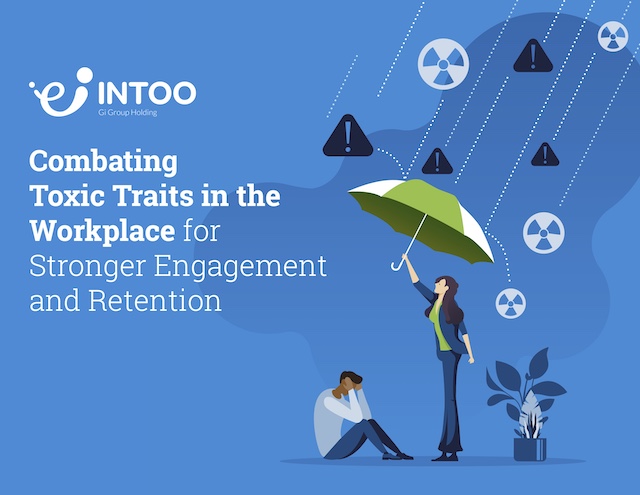The Worker Adjustment and Retraining Notification (WARN) Act is a federal law that requires employers with 100 or more employees to provide at least 60 days’ notice to employees before a plant closing or mass layoff. When a large reduction in force is publicized, the Act is often in the news. Some employers have been called out by former employees for cutting corners and not abiding by the law. What’s at stake?
This article explains the WARN Act at a high level while also providing some considerations to take into account if the WARN Act is on your radar.
Layoff notifications are hard. This step-by-step guide makes the conversation easier for you and your employees.
The Purpose of the WARN Act
The purpose of the WARN Act is to give employees and their families some transition time to adjust to the prospective loss of employment, to seek and obtain other employment, and, if necessary, to enter skill training or retraining programs that will allow these employees to successfully compete in the job market.
Who Does the WARN Act Apply to?
The WARN Act applies to employers who employ 100 or more employees, including both full-time and part-time employees. Employers are also required to give notice to the state dislocated worker unit and the chief elected official of the unit of local government in which the employment site is located.
The WARN Act applies to both private and public sector employers, and it applies to all types of businesses, including for-profit and non-profit organizations.
Are There Any Exceptions to the WARN Act?
There are some exceptions to the WARN Act, such as if the closing or layoff is the result of a natural disaster or a strike or lockout not caused by the employer. Additionally, if an employer can demonstrate that the closing or layoff is caused by a faltering company, and that giving notice would have prevented the employer from obtaining necessary capital or business, the employer may be excused from providing notice.
What are the Risks of Violating the WARN Act?
Violations of the WARN Act can result in penalties, including back pay and benefits for each day of violation, as well as civil penalties of up to $500 per day per employee. Additional costs in the form of expenses of time and resources are ones that many organizations can’t afford—especially during a time of layoffs and/or restructuring.

What Triggers the Federal Warn Act?
The WARN Act triggers in several scenarios involving significant employee losses at covered businesses (100+ full-time employees, employed for at least six months):
- Plant closings: Shutting down a workplace results in a WARN trigger if 50 or more employees lose their jobs within 30 days.
- Mass layoffs of 50-499 employees, making up at least 33% of the workforce at one location, laid off within 30 days.
- Mass layoffs of 500 or more employees laid off within 30 days, regardless of workforce percentage.
- Rolling 30-day window: When multiple smaller groups experience losses within 90 days would be large enough to trigger WARN if combined (unless separate causes and actions explain each event).
- Rolling 90-day window: Occasionally, when two or more groups of individuals experience layoffs at a single location within 90 days, the total number will be considered to trigger WARN (unless separate causes and actions explain each event).
Exceptions exist for unforeseen business circumstances, natural disasters, strikes/lockouts, and employee transfers within reasonable distances.
California’s Cal-WARN triggers with similar provisions but only requires 50 layoffs in a 30-day window and covers business relocations exceeding 100 miles.
Failure to give proper notice under both laws can lead to significant penalties, including back pay, civil fines, healthcare costs, and attorney fees.
Remember, this is a simplified overview. Consult legal professionals for detailed guidance on WARN Act and Cal-WARN compliance.
Do States Have Their Own Warn Act Laws?
Yes, in addition to the federal Worker Adjustment and Retraining Notification (WARN) Act, several states have enacted laws around mass layoffs and plant closings. These state-level WARN Acts often mirror the federal law but can differ in certain aspects, such as the number of employees triggering notification requirements, the definition of a covered employer, or the length of notice required before a mass layoff or plant closure. They may cover smaller layoffs, require longer notice periods, and offer more substantial worker benefits or penalties for violations.
For instance, in California, WARN laws apply to companies with 75 or more full or part-time employees. Likewise, other states like New York, Illinois, and New Jersey have their own WARN Act laws with provisions that might extend requirements beyond the federal mandates. Employers operating in multiple states must navigate both federal and state-level WARN Acts to ensure compliance, as failure to adhere to these regulations can result in significant financial penalties.
Does WARN Apply to Remote Employees?
The applicability of WARN (Worker Adjustment and Retraining Notification Act) to remote employees is a complex issue that depends on the specifics of each situation. Generally, under the stipulation for “outstationed workers,” WARN considers employment loss of remote workers to be covered if they report to or are assigned work from a single site of employment along with other employees. So, if remote employees are connected to and receive assignments from a central office that is closing, they would likely be counted in determining WARN thresholds and eligibility for notice. With laws around remote and hybrid work evolving, employers facing reductions should seek legal guidance on how remote employees factor into WARN notice requirements.
Review the 9 steps to conducting a successful layoff.
WARN Act in the News
Lawsuits have been filed in a number of industries by former employees seeking damages from companies who failed to comply with the WARN Act, demonstrating that any organization with 100+ employees is at risk of legal action if it doesn’t honor the law.
Former employees of Twitter filed a class action lawsuit against the company for failing to provide 60 days advance notice before the mass layoffs, as required by the state of California.
When employees of the the weight loss services company Jenny Craig learned their employer would be shutting down, they filed a class-action lawsuit, since they were not given 60 days notice.
Former workers from United Furniture, one of the country’s largest furniture manufacturers, filed lawsuits against the company for failing to comply with the WARN Act.
More than 1,000 employees of US Steel were let go over a couple months without receiving ample notice, resulting in a subpoena from the Illinois Department of Labor.
Orlando resorts company Rosen Hotels and Resorts settled for $2.3 million in a lawsuit brought against them by over 3,600 employees for failing to give notice of their employment status, paying them, or providing benefits during a 6-month furlough period.

How Employers Can Protect Themselves
Layoffs affect workers in multiple ways, with financial, emotional, and mental consequences. Mitigating lawsuits and reducing the negative impacts of these unfortunate events for both employees and the organization is possible when you have information and processes in place before you actually need them.
Consider the following:
- Layoff anxiety affects not only those who are let go, but also remaining employees. This can impact engagement and productivity, not to mention retention at a time when an organization most needs its employees to come together and make up for the resources who have left. Managing layoffs respectfully, in an organized fashion, can reduce panic and speculation.
- Having a complete severance package in place to offer employees can protect your organization from legal action. Make sure that you follow best practices.
- Work with a trusted partner to put benefits in place for when you need them. Offering outplacement to exiting employees will help them move on from the layoff more quickly, minimizing negative backlash. Providing this benefit will also help your remaining employees to understand that you’re assisting their former colleagues as they leave the company.
- Keep current on the laws and regulations that affect your business, as they are constantly changing.
Sources:
United States Department of Labor, “Worker Adjustment and Retraining Notification (WARN)”
United States Department of Labor, “Employee Rights Under the WARN Act”
National Law Review, “Employers Must Provide 60 Days’ Notice of Plant Closings and Mass Layoffs under the Worker Adjustment and Retraining Notification (WARN) Act”
INTOO’s outplacement program helps employees transition to new jobs through an unlimited number of hours of one-on-one, on-demand coaching from premier career counselors, resume reviews, and other career services. Contact us to learn more about how our outplacement program can benefit your company when you’re transitioning employees.
Robyn Kern is a seasoned business writer who has written in the HR, education, technology, and nonprofit spaces. She writes about topics including outplacement, layoffs, career development, internal mobility, candidate experience, succession planning, talent acquisition, and more, with the goal of surfacing workforce trends and educating the HR community on these key topics. Her work has been featured on hrforhr.org and trainingindustry.com.











